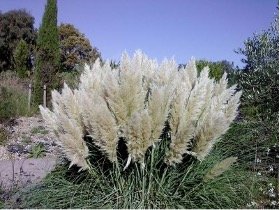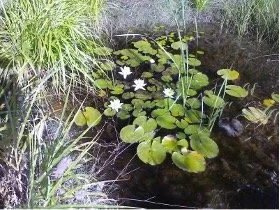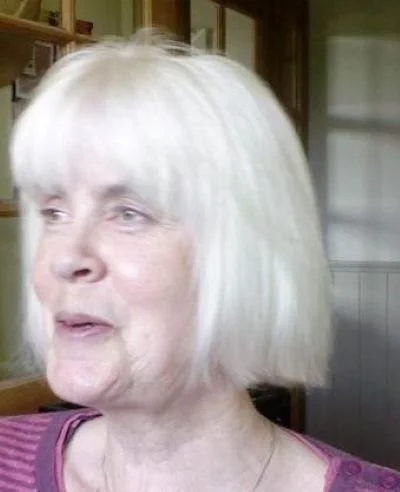
DLCI 2022 Magazines - January
January
2022
HAPPY NEW YEAR
From us all
Lin, Isla, Jackie, Sheila, Rosemary and Liz
NEWS AND VIEWS FROM THE PRESIDENT
December began in celebratory mood, with a very well-attended Christmas lunch at the excellent Château Les Merles. Their staff looked after us very well and we ate a delicious lunch. Everyone had a wonderful time! All the committee contributed to the organisation of this event, but my particular thanks go to Teresa, our Events Coordinator.
Shortly afterwards, I visited the Phoenix Book Fair team at their sorting facility in Bergerac, in order to present our ‘animal charity’ cheque for 1000 euros to Honorary President and Phoenix founding member, Richard Johnson. DLCI member Joanne Holloway, who nominated Phoenix was also present, along with members of the Phoenix Conseil and sorting team.
‘Phoenix would like to thank the Dordogne Ladies in general and Kathy and Joanne in particular for their extremely generous donation’, said Peter McAuslan, Treasurer of Phoenix.
There is considerable expense involved in the day-to-day support of animals in need of care and rehoming but occasionally an urgent case arises. Gitan is a German Shepherd dog with a growth which severely restricted his mobility and made him very miserable. His owner, an elderly French farmer, could not afford the necessary operation so Phoenix stepped in. It is wonderful to think that our donation could make such a difference to the quality of life of both an animal and its owner.
Despite the emergence of the Omicron variant, we are hoping that the vaccination programme will allow us to continue with our planned events. For your diary, we have the following in mind and you will find further details of the Chinese New Year lunch later in the magazine:
28 January – Chinese New Year lunch
February – vegetarian lunch at Le Jardin de Kashmir, Bergerac, where speaker Kathryn Carr will talk about the gestures we can all make towards saving the planet
March – Liz Davies will give a talk about her work for the Marie Stopes Foundation (venue will be in the north of our area)
7th April – ‘An Evening with Martin Walker’ at the Maison des Vins, Bergerac
20th April – Guided walk and Afternoon Tea in Eymet
I am aware that some of us have experienced disappointment with our plans for Christmas but we hope that 2022 will bring better news and that it will not be long before we see our loved ones again. In the meantime, keep in touch with us and we hope to see you soon.
Happy New Year, Bonne Année – meilleurs voeux pour le nouvel An
Lin
FORTHCOMING EVENTS
ASIA ROYAL RESTAURANT, Creysse
Friday 28th January (this was the closest date we could get to the Chinese New Year in February)
Please book early to avoid disappointment
The restaurant offers both buffet and specific foods to order (always excellent).
Cost is 12.99€ per person – partner or 1 guest per member most welcome.
The tables are booked for 12 noon so please can members arrive by 11.45
GARDENING IN FRANCE
By Christine Lees
TRIAL AND ERROR
Since moving to France, I have been attempting by trial and error to find plants which would survive in my heavy clay soil and also survive through the difficult conditions of 4 months of heat and drought in the summer, the very windy location of my garden, and several months of heavy rain and flooding in the winter. I have had successes and failures, I have found that roses do particularly well here as the alkaline clay soil is very fertile.
Two or three years ago, I decided to create 2 oval beds in a part of my garden which gets very wet over winter, but is rock hard in the summer. I wanted to grow a mixture of grasses and herbaceous perennial plants to provide colour in the summer. Many of the perennials did not survive the winters but I am now trying planting them with gravel to improve drainage. However the grasses and the phormiums have all done really well.
The mixing of grasses and perennials in 'prairie' type planting became popular in America and continental Europe particularly Germany and Holland, in the last 40-50 years, due to the innovative designs of people such as Piet Oudolf. This style of gardening lends itself very well to larger country gardens and fits in very well with the landscape. Grasses add movement and delicacy to a border, particularly in wind.
Consider planting some grasses this year. They look good for most of the year, and evergreen grasses need little maintenance beyond combing through with your hands in the spring to remove dead stems, and deciduous grasses can be cut down carefully in late winter/early spring avoiding the new shoots coming through. They come in all sizes and many different colours, many changing colour in the autumn, when they often flower as well. Miscanthus sinensis is large and spectacular, as is Stipa gigantea. Molinia caerulea 'Variegata' (purple moor grass) has green and cream striped leaves and purple flowers. Carex elata 'Aurea' (Bowles' golden sedge) has golden yellow leaves and looks good next to ponds, as does Carex osimensis 'Evergold' with dark green and yellow striped leaves. Festuca glauca 'Blaufuchs' has narrow bright blue leaves.
Hakenechloa macra 'Aureola' also has golden leaves with cream and green stripes. I have also found orange/green coloured grasses which work well with yellow and orange flowers such as Rudbeckias.
Happy new gardening year!
Chris
JANUARY BIRTHDAYS
Liz Berks
Monica Iles
Sharon Lawson
June Loates
Janice Lyles
Anita Philips
Ann Stolworthy
Jane Stumpfle
DORDOGNE LADIES BOOK CLUBCALCULATING OUR CARBON FOOTPRINT
SHOULD WE BE CHOOSING DIFFERENT MODES OF TRANSPORT ?
by Kathryn Carr
Having just driven our Volvo XC60 back to
the UK in May this year we were interested to find out how much carbon we had emitted from our journey. We used a very straightforward carbon calculating website https://www.carbonfootprint.com/calculator.aspx to do this and we were really surprised by how much carbon we had emitted, particularly when we compared this to travelling by train.
Like many of us we didn’t consider doing this calculation before we set out on our journey. If we had done so, it might have changed our decision to take the car. Certainly the car is the easiest option as we just get in and drive. But should we consider travelling by train?
Of course everyone has his or her own preferences for the choice of mode of transport. For many of us it comes down to weighing up the pros and cons of each option. On longer trips most of us will use a combination of travel options to achieve our travel objectives. Below I have compared the pros and cons of using cars, buses, trains and planes, and I hope it can help us to make the right decisions for all of us if we want to identify the most efficient and carbon friendly way to travel :
Travelling by car :
Cost : the biggest cost for car travel is the fuel and depending on the size of the car will affect the amount of fuel it uses. There are many other costs that we don’t factor in like the wear and tear on the vehicle, cost of extra insurance and vehicle breakdown cover and the cost of road tolls.
Distance : we often under-estimate the time and distance journeys take as we cannot factor in delays due to traffic and road works and rest stops. These can often add significant time to our journeys.
Tiredness : most people who travel long distances by car know how tiring car journeys are and the necessity of taking overnight stops as well as regular coffee and loo stops. This is all extra cost of time and money.
Carbon footprint : depending on the size of the car engine the amount of Carbon emitted varies. How many of us actually know how much our car emits?
Travelling by buses :
Cost : costs for bus travel are a lot less than other modes of transport.
Location : bus stations are not always located at the most convenient places but normally large towns and cities are well connected.
Security : there is limited security checks on buses so most baggage items can be accepted.
Carbon footprint : as buses are usually diesel powered they are not the most environmentally friendly but as with trains, because lots of people are sharing the journey the rate of pollution is less.
Travelling by train :
Cost : costs are now becoming much more competitive and prices are comparative with other modes of transport if we factor in all the costs highlighted above.
Location : stations are usually located very conveniently in the centre of towns and cities and certainly within walking distance of most attractions and with links to other modes of transport.
Security : very limited security so no limit to amount or type of baggage. The weight of baggage is the main limiting factor.
Carbon footprint : trains like buses carry lots of people so it is an efficient way of moving people. The carbon footprint of the current diesel/electric trains are very low.
Travelling by plane :
Cost : although the cost of flights is often proportionally very low do we factor in the additional expenses such as taxis or buses to the airport, checked in baggage fees, excess baggage fines, and marked up food and drink plus shopping at the airport?
Location : airports are seldom conveniently located so often you need to travel quite a distance to get to your location which usually requires taxis or car rentals. Compare this with trains which take you to the centre of towns/cities.
Security : security at airports robs you of time and dignity, it also limits what you can take on board which can mean having to lose valuable items.
Carbon footprint : air travel has a higher carbon footprint than any other mode of transport.
Of course, everyone has his or her own preferences for travel. For many of us it comes down to weighing up the pros and cons of each option. However as part of our caring for creation theme this decision should be weighted in favour of our environment and our desire to reduce our impact on our planet. Every decision we make has consequences which the future generations are going to have to live with while we have the luxury of choice, they probably won’t have.
POETRY CORNER
As evocative now as it was then!
Ring Out, Wild Bells
Alfred, Lord Tennyson (1809-1892)
Ring out, wild bells, to the wild sky,
The flying cloud, the frosty light;
The year is dying in the night;
Ring out, wild bells, and let him die.
Ring out the old, ring in the new,
Ring, happy bells, across the snow:
The year is going, let him go;
Ring out the false, ring in the true.
Ring out the grief that saps the mind,
For those that here we see no more,
Ring out the feud of rich and poor,
Ring in redress to all mankind.
Ring out a slowly dying cause,
And ancient forms of party strife;
Ring in the nobler modes of life,
With sweeter manners, purer laws.
Ring out the want, the care the sin,
The faithless coldness of the times;
Ring out, ring out my mournful rhymes,
But ring the fuller minstrel in.
Ring out false pride in place and blood,
The civic slander and the spite;
Ring in the love of truth and right,
Ring in the common love of good.
Ring out old shapes of foul disease,
Ring out the narrowing lust of gold;
Ring out the thousand wars of old,
Ring in the thousand years of peace.
Ring in the valiant man and free,
The larger heart, the kindlier hand;
Ring out the darkness of the land,
Ring in the Christ that is to be.
DLCI CHRISTMAS LUNCH AT LES MERLES
Great fun was had by us all at the Christmas Lunch. Venue, Food and Service were excellent, wine flowed and laughter filled the room. Many thanks to Teresa for organising such a wonderful day.
PHOTO REQUEST
We would love to include more of your photos including those for Pets Corner in the next Newsletter. Simply email me at DLCIMagazine@gmail.com (no later than 27th of the month) with the photo and where it is. They will be published in the next months newsletter
LASTLY
A BIG THANK YOU TO EVERYONE WHO HAS CONTRIBUTED TO THIS NEWSLETTER.
PLEASE NOTE THAT DUE TO CURRENT DATA PROTECTION LAWS THIS DOCUMENT MUST NOT BE SHARED
WITH ANYONE WHO IS NOT A CURRENT DLCI MEMBER

















